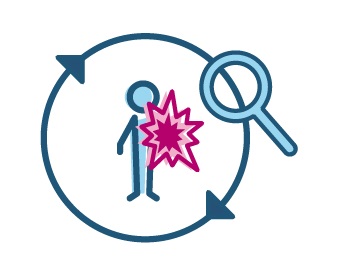 Through analysis and engagement with the affected population, humanitarians identified a gap in legal processes for those affected—and the inability of Palestinian authorities to respond—when Israeli authorities demolish a water point due to lack of dedicated funds and other shortcomings. Thus, community members proposed targeting the Palestinian authorities to change behavior, attitudes, beliefs, etc., to help reduce the risk their communities face or, at the very least, increase their
Through analysis and engagement with the affected population, humanitarians identified a gap in legal processes for those affected—and the inability of Palestinian authorities to respond—when Israeli authorities demolish a water point due to lack of dedicated funds and other shortcomings. Thus, community members proposed targeting the Palestinian authorities to change behavior, attitudes, beliefs, etc., to help reduce the risk their communities face or, at the very least, increase their
capacity to deal with it when it does occur.
As a result of efforts to address the deliberate deprivation, including direct dialogue sessions between the affected community and specific Palestinian authorities, facilitated by a consortium of NGOs, Palestinian authorities have since changed their behavior in several ways, including by:
- Allocating a budget to be able to respond when water points are demolished by Israeli authorities.
- Increasing the ministerial budget for lawyers who deal with related issues and
looping them into the legal support process provided by the U.N. clusters’ Legal Task Force. The population has better relationships with these lawyers and thus more confidence in working with them to bring legal cases against Israeli authorities. - Establishing mechanisms for communities to seek rehabilitation and support from authorities for damaged water infrastructure.
In some instances, the communities now discuss their own Protection Response Plans (PRP) directly with relevant Palestinian authorities.
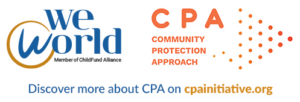 This case example presents WeWorld–GVC’s outcome-oriented approach to protection—a Community Protection Approach. The methodology embraces all three key elements of results-based protection by embedding a solid protection analysis that starts from the perspective of the population into their approach to inform and effectively facilitate multi-disciplinary strategies by relevant actors to achieve results and protection outcomes.
This case example presents WeWorld–GVC’s outcome-oriented approach to protection—a Community Protection Approach. The methodology embraces all three key elements of results-based protection by embedding a solid protection analysis that starts from the perspective of the population into their approach to inform and effectively facilitate multi-disciplinary strategies by relevant actors to achieve results and protection outcomes.
WeWorld-GVC’s Community Protection Approach won First Place in InterAction’s 2020 Results-Based Protection Good Practice Contest.
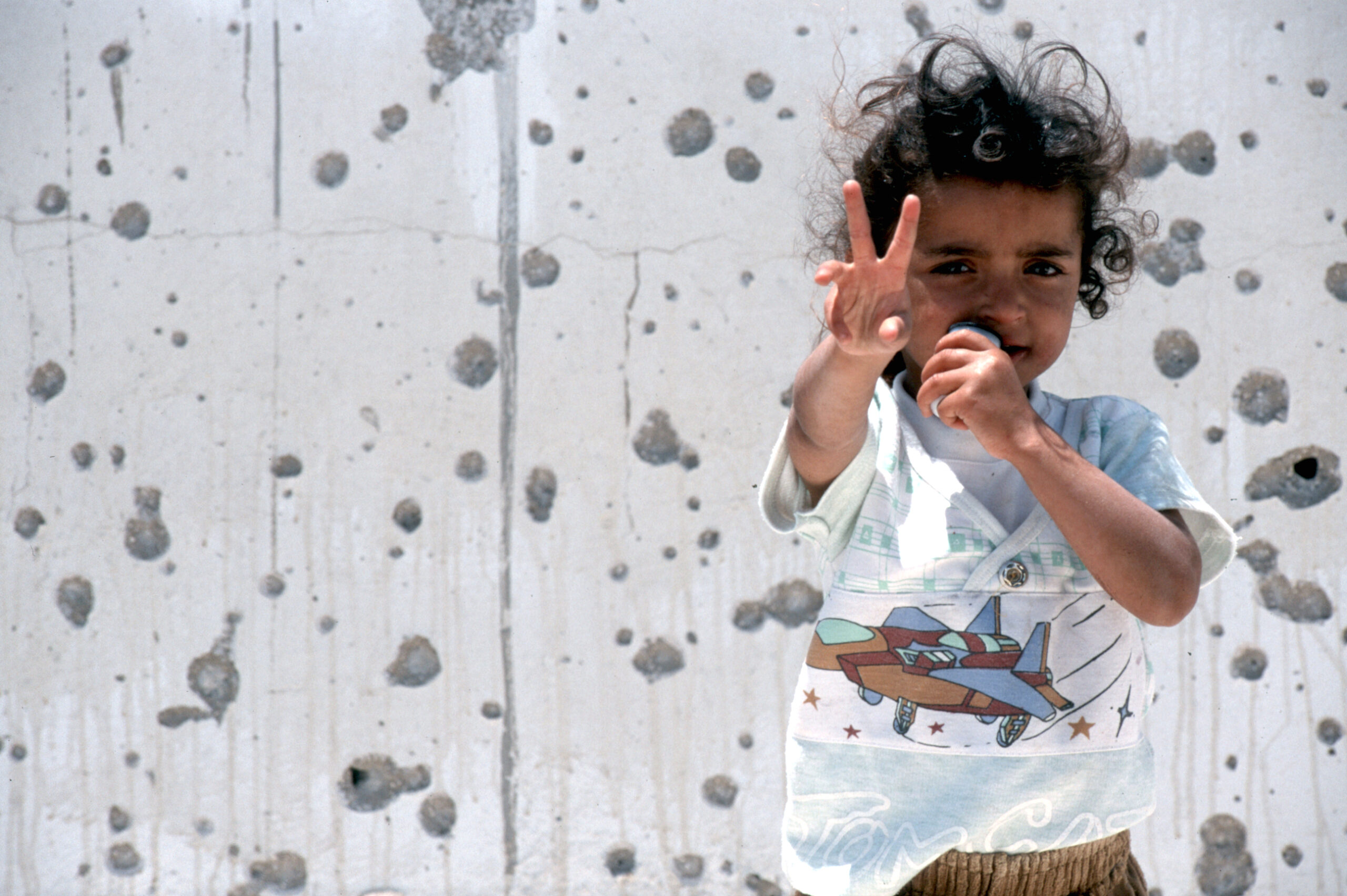
What is the Community Protection Approach (CPA)?
The CPA is a collection of tools and methodologies used to produce analysis, starting from the perspective of the affected population. This information is fed into an interactive dashboard that, in turn, facilitates multi-sectoral and multi-disciplinary strategies.
Who is using the CPA?
The CPA is currently being used by many NGOs and other actors in several country contexts. In the oPt, for example, a DG–ECHO-funded Consortium comprising five partners—WeWorld–GVC, NRC, Action Against Hunger, Premiere Urgence Internationale, and ACTED—came together to do joint analysis to understand community protection risks (threats, vulnerabilities, and capacities) through an outcome-oriented, multi-sectoral quantitative system of indicators and qualitative narratives. As of late 2020, in oPt, Protection Response Plans, developed jointly by consortium partners and the affected community, have been implemented in 171 communities. The activities fall within 12 different sectors and are carried out by the five consortium partners, the affected communities, relevant Palestinian Authorities, and organizations outside the consortium.
Through combining both qualitative and quantitative data, the CPA allows for the identification of trends and patterns, and the exploration of perceptions, relationships, and other intangible factors which are necessary for understanding root causes.
WEWORLD–GVC STAFF MEMBER
What does it consist of?
The CPA consists of three interconnected but adaptable components that can be applied separately or together depending on available resources and constraints in time, access, an security.
First, the quantitative multi-sector questionnaire collects data via structured group interviews with community members, representing diverse groups, including age and gender. The questionnaire can also be completed with existing secondary data, but it is important to take into consideration the source and credibility of the data. The data must also be comparable with the questionnaire, pulling from similar definitions and methodologies.
Second, qualitative data is collected through a participatory approach to investigate the quantitative information—the source of protection issues, their consequences, and coping mechanisms. It is a process of community engagement for monitoring and analyzing the evolution of the context independent from sector activities. To ensure iteration the CPA applies an outcome-harvesting method. On a yearly basis, changes are discussed directly with the affected population on the basis of updated data to investigate what contributed to the change, and whether there was an effective change either in behavior, attitudes or specific aspects of safety and dignity. These Changes Sessions ensure time analysis and identification of risk patterns.
Third, an Individual Protection Approach (IPA) complements and leverages the community engagement process initiated by the first and second components. The IPA seeks to address immediate needs affecting particular individuals and groups within the community. It provides a comprehensive mechanism to identify, assess, and link right-holders to best-placed service providers. After obtaining their consent, Protection Officers assess right-holders’ needs and jointly determine the best course of action. The entire process is systemized via the CPA platform, providing ongoing and up-to-date analysis.
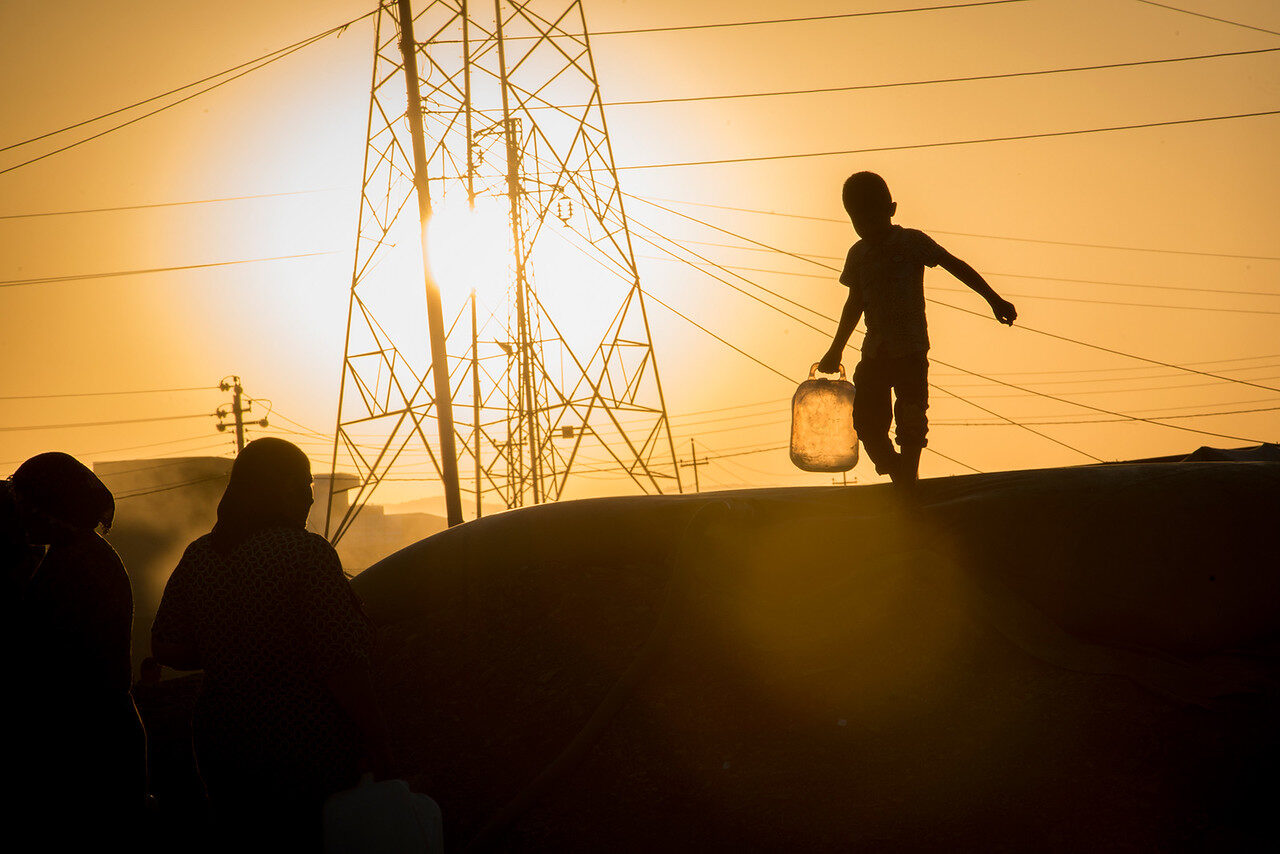
Collecting data through an interactive dashboard and incorporating multi-disciplinary strategies to achieve protection outcomes
The CPA tools for engagement and data collection are designed to collect information related to protection outcomes, emphasizing how other sectors can contribute to reducing risk. The data obtained is input into a digital collective protection data dashboard.This platform was developed to continuously address challenges in doing protection analysis, such as the burdensome process of data cleaning, processing, and managing, specifically for qualitative data. The dashboard synthesizes and collates information and data and organizes it based on different categories, including the components of the risk equation, to understand and prioritize protection outcomes. Information can be sorted by community or theme so the user can easily extract the information needed.
The toolkit of data collection resources is designed to be flexible—there are currently 17 tools included. A handbook is provided to understand if the CPA has added value, identify the modality most relevant to the context, and the tools needed.Organizations wishing to use the CPA can contextualize any tool according to accessibility, security, previous knowledge of the area, and timing considerations, and there is guidance to support the process. The logic is not to reinvent the wheel—if an organization has the appropriate tool, they do not need to reproduce it. Most of the tools are embedded in a digital platform that streamlines the use of the tools and performs automatic calculation, correlations between variables both quantitative and qualitative, automatic quality check of data collected, etc. Reference sheets are available to support field staff in the contextualization process.
Analysis gleaned from the CPA has had wider-reaching impacts in the oPt as well
For example, the analysis was used to design a multi-year, multi- disciplinary project funded by UNICEF, where humanitarian water-trucking activities were accompanied by rehabilitation and construction of water infrastructure–activities that are often deemed “development activities.” This resulted in the creation of a comprehensive, multi-level water-trucking governance system.
Ultimately, a system of accountability was created, in which the Palestinian Water Authorities could respond directly to the population and provide support while also calling for diplomatic actions or requesting humanitarian coordination to prioritize certain actions (i.e., an important change in behavior that demonstrates taking responsibility). Prior, there was no system of accountability and each individual family had to cope with the impacts. Furthermore, the new water system supported Palestinians’ livelihoods, reducing vulnerability to being forced to relocate in search of water.
Protection Egg Model
Once a team uses the appropriate tools to collect information, it is brought back to the community where a Protection Response Plan (PRP) of proposed interventions, organized according to the Protection Egg model is formulated through a bottom-up process.
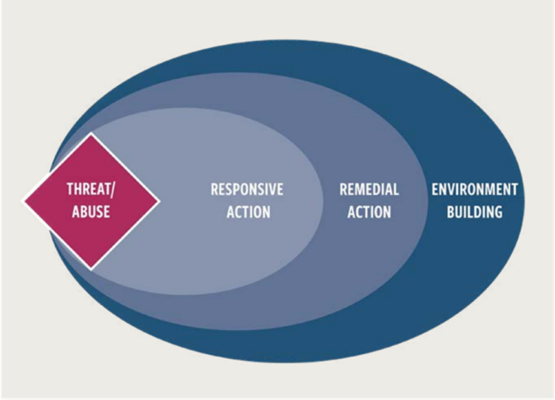
The Protection Egg model, first developed by the International Committee of the Red Cross, is a widely referenced framework and is a helpful tool for strategizing and designing programs. It encourages humanitarians to develop programs that respond to each threat by drawing on a series of complementary actions at different levels—responsive actions designed to prevent and stop abuses and alleviate immediate effects; remedial action to restore dignity and prevent secondary abuses from occurring; and environment building to encourage changes in behaviors, attitudes, policies, and practices, etc., that are underlying causes of abuses. WeWorld-GVC embraces this framework when engaging communities on potential solutions to key protection risks.
Front-line sector staff (engineers, WASH staff, livelihood staff, social workers, etc.) lead this process with the community. CPA Officers are trained to provide support.
The PRPs are then analyzed by senior management staff from the organizations relevant to the specific PRP (area managers, project managers, advocacy coordinators, emergency coordinators, etc.). The PRPs assign responsibility to take certain actions to relevant community members, NGOs, and authorities and facilitate relationships between those that are needed. Together, these actions are intended to achieve reduced risk for the affected population.
The CPA is designed to actively share information and analysis with all relevant stakeholders, including CPA partners, donors, Humanitarian Cluster Coordinators, relevant government bodies, and other international and local NGOs. Information is also shared with representatives of different member states situated in Brussels or their country capitals responsible for political decision-making.
While the dashboard contains multiple levels of information, WeWorld-GVC can tailor the amount accessible to different actors depending on their involvement and needs, an important and sometimes challenging aspect of information sharing amongst partners.For example, those who collect the data have access to raw data, others— generally managers and some staff at the H.Q. level—may only have access to the aggregated analysis of information, and other decision-makers and some donors have access to still other parts of the dashboard.
In CONCLUSION…
In conclusion, the CPA may sound like a multi-sectoral needs assessment. However, it goes above and beyond simply needs. The key aspect is in its continuous nature
that creates a localized, continuous process of analysis and monitoring of the threats, vulnerabilities, and capacities of a given population. To do it well, this approach requires staff time and resources, but the result is a holistic understanding of the risks faced by the affected population that prompts immediate action driven by populations themselves. The CPA complements this action by providing the building blocks for effective multi-disciplinary strategies.
If your organization is interested in exploring the tools, please reach out to Paloma Solo: paloma.solo@gvc.weworld.it
The toolkit entails guides for key informant interviews, transect walks, focus group discussions, and other methodologies.
This case example is based on WeWorld’s submission to InterAction’s Results-Based Protection 2020 Good Practice Contest (submitted by Paloma Solo de Zaldivar, Francesco Michele, Betina Borova, and Ahmad Sharif).
CLICK HERE TO EXPLORE OTHER CASE EXAMPLES OF RBP IN ACTION
READ MORESign-up
"*" indicates required fields